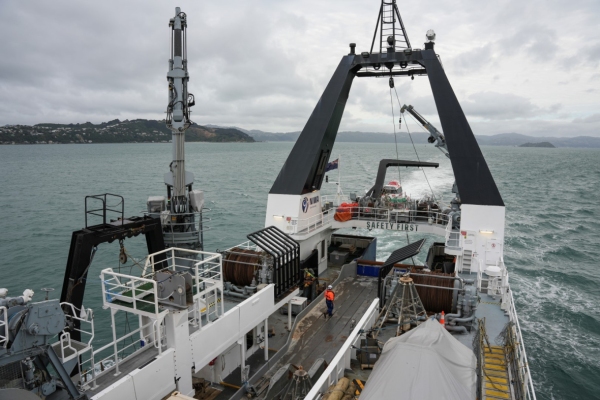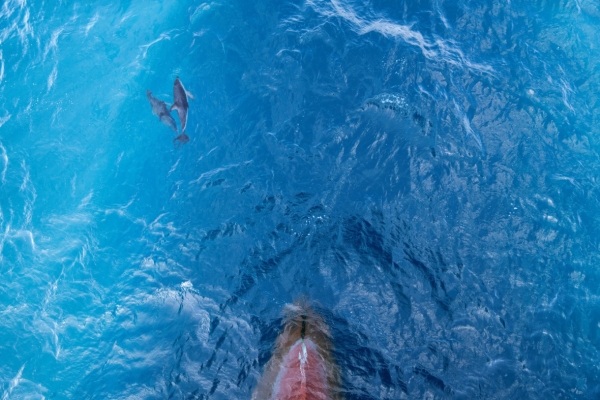Bounty Trough - voyage update #1
NIWA Voyage Leader, Sadie Mills on the first three days of The Ocean Census – Bounty Trough research voyage - a 21-day expedition to discover new species.
With the ship loaded with supplies and our science team settled in, we set sail from Wellington on NIWA’s research vessel, RVTangaroa. I really enjoy being out at sea. I love the thrill of discovering new things in unexplored areas. We have chosen a research area, the Bounty Trough, that is very under-sampled, where we don’t have many specimens in New Zealand collections and hence will likely yield many undescribed species.
![The Ocean Census - Bounty Trough team [Ocean Census / NIWA / Rebekah Parsons-King]](/sites/default/files/styles/wide/public/inline-images/2024_02_OCEAN_CENSUS_parsonskingDSC08681%20copy%20%281%29.jpg?itok=DB7ebJy1)
Our first stop on the 21-day expedition was to run the 5,000m of cable that we will use in the deep water off the Cook Strait. This action was to ensure things run smoothly later in the voyage when we are targeting those depths, and this area was a great spot to test that.
On Friday, we made our way to the canyons incising the Otago continental shelf, the first station we sampled. The canyon is one of several distinctive gashes in the continental slope off Otago.
Kerry Walton of Te Papa explains. “Spanning from the shelf edge, at around 200 metres, to just over 1,000 metres, the canyons represent one of the most diverse and interesting sampling locations off the South Island.
“The faunas of the Otago Shelf and Canyons are quite well known. However, most of the sampling in those areas was done before the widespread adoption of genetic sequencing. As a result, most of the specimens we hold in natural history collections were not preserved in a way conducive to most genetic approaches. This makes re-visiting this diverse site of particular value. Not only will it give us a huge boost to the diversity values that result from this expedition, but it will hopefully yield dozens, if not hundreds, of species that were not previously available for genetic research.” Here we made several deployments to gather specimens and retrieved good samples from sediments and the canyon walls.
On Saturday, we made our way to the first of the pockmark sites and seamounts in the area. Otago margin pockmark fields have been identified here and we have two sites to explore, which may contain cold seep communities such as tubeworms or seep clams, although this is yet to be determined.
We deployed the DTIS (Deep Towed Imaging System) to get visual confirmation of seafloor topography and fauna. We saw muddy seafloor at the start, giant foraminifera scattered through the first half of transect, sparse epifauna, transitioning to coarser coral rubble substrate towards the end. There were no visible signs of seep fauna in this area.
We retrieved the first fish trap on deck, which unfortunately didn’t capture any fish this time, but had an isopod and small amphipods in a smaller crustacean trap. Three multicorer deployments were done in the muddy sediment of the pockmark field and good samples were retained for meiofauna, macrofauna and sediment properties. A hyperbenthic ’Brenke sled’ was also deployed and collected some nice samples of invertebrates and juvenile rattail fish.
We are now looking to the next few days as we start to explore some seamounts and the head of the south Bounty Channel before we travel out to deeper waters.



